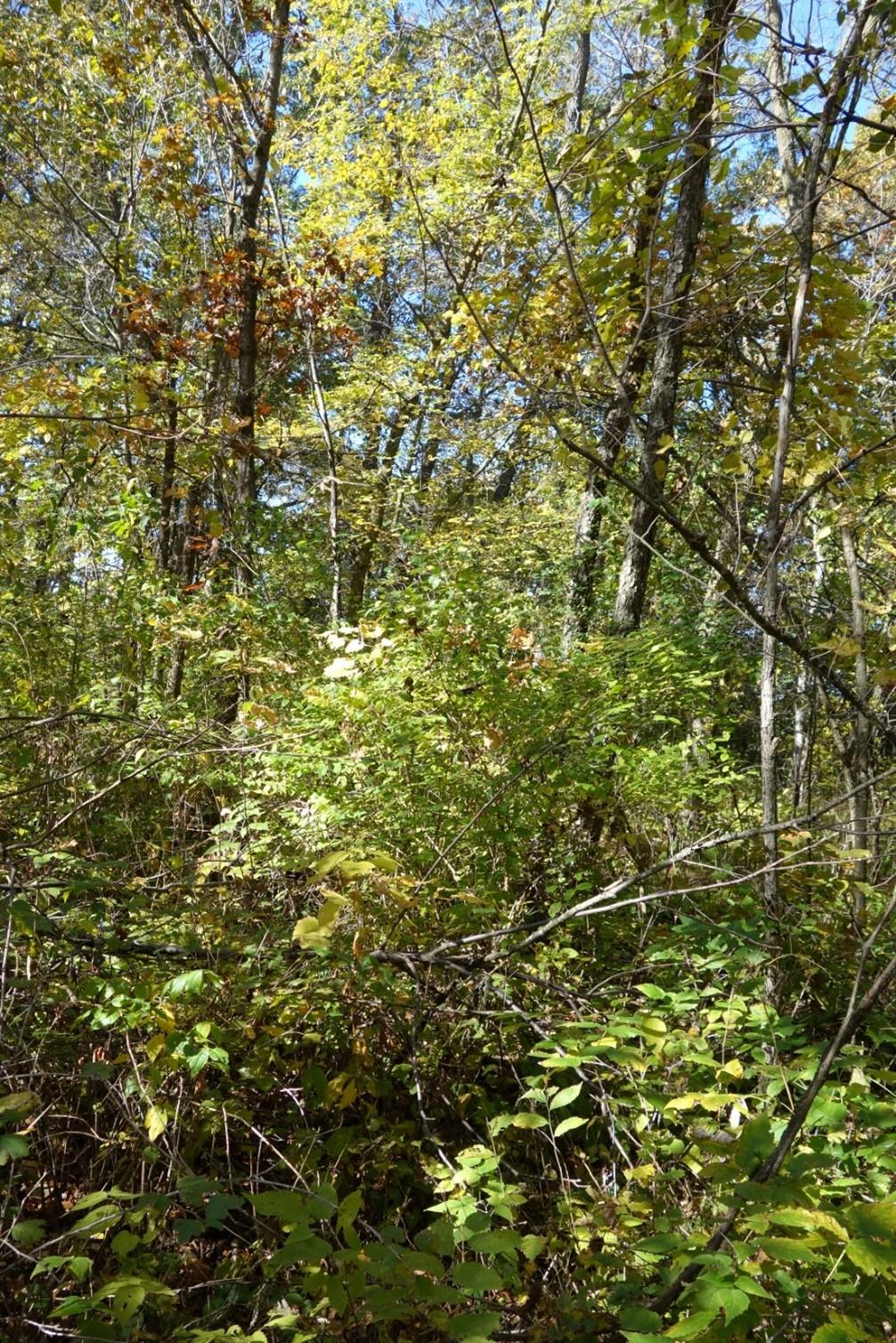Overview
This case study is an opportunity to assess effectiveness of different silvicultural prescriptions after 25 years. This site was part of a 1995 University of Minnesota oak regeneration research project. The research study was set up to compare oak regeneration results between a clearcut with reserves harvest, a shelterwood harvest, and different methods of skidding logs through the site. Unfortunately, we were unable to locate the M.S. Thesis or any of the associated data for this research, so we have relied on MN DNR records and data on current conditions to assess effectiveness of the different treatments.
The silvicultural strategies employed were:
- Re-initiate a stand as would severe windthrow to create open to very large gap habitat.
- Maintain a stand as would selective windthrow by removal of canopy trees in large gaps.
Oak acorns are an important food for many wildlife species. Without disturbance, over time oak stands on productive, mesic sites convert through natural succession to more shade tolerant and/or faster growing tree species. Yet it has been challenging over the years to find practical, affordable cultural methods to consistently regenerate red oak.
The challenges led forest managers through the 1970s, 80s and 90s to try several different methods:
- Clearcut with reserves was a common harvest prescription.
- Shelterwood was another harvest prescription tried when markets and other conditions allowed.
- A low-cost site preparation method applicable across harvest prescriptions was to use the skidding of logs with intact tops through a site in order to:
- Provide soil scarification for acorns, and
- Damage and set back competing brush vegetation.
Both of these types of harvest prescriptions, as well as site preparation by log-skidding, were used on portions of the study site to assess their effectiveness in facilitating early establishment of oak seedlings.
NOTE: This site and project were the subject of an M.S. thesis by graduate student Xiwei Yin at the University of Minnesota school of Forestry. Unfortunately, we were unable to locate a copy of the thesis, or any data or records associated with it.
Silviculture Objectives
- Regenerate a mature red and black oak stand to a young stand of similar composition.
- Maintain and improve wildlife habitat with a strong component of oak trees in the new stand. One of oak stands’ most important contributions to wildlife is mast, or acorns which are an important seasonal food source for many wildlife species.
- Evaluate the effectiveness of several different prescriptions.
Pre-treatment stand description and condition
From timber sales records we know that mature red oak was by far the dominant overstory species in 1994. There was a mixture small volumes of other hardwood species present in the stand, including paper birch, bur oak, boxelder, aspen, elm and basswood.
Table 1: 1994 Timber Sale Appraisal Species and Volume Estimates. MBF = thousand board feet.
4 Acre Clearcut with Reserves Harvest |
| 6 Acre Initial Shelterwood Harvest | ||||
Species | Quantity | Unit |
| Species | Quantity | Unit |
Oak | 18.95 | MBF |
| Oak | 20.11 | MBF |
Aspen | 0 | MBF |
| Aspen | 1.22 | MBF |
American Elm | .13 | MBF |
| American Elm | .37 | MBF |
Basswood | 0 | MBF |
| Basswood | .32 | MBF |
Black Cherry | .1 | MBF |
| Black Cherry | .09 | MBF |
Cottonwood | .1 | MBF |
| Cottonwood | 0 | MBF |
Butternut | .07 | MBF |
| Butternut | 0 | MBF |
Paper Birch | 0 | MBF |
| Paper Birch | .09 | MBF |
Total | 19.35 | MBF |
| Total | 22.2 | MBF |
Pre-treatment forest health issues
Heart rot. The stand was between 100 to 120 years old, and was beginning to experience a modest amount of heart rot. This is common as red oak stands reach biological maturity in southeastern Minnesota. If stands are not treated, they can often experience fairly rapid conversion to more shade tolerant species as they reach 120 to 130 years of age.
Managing MHs37 stands in the absence of disturbance increases the risk of losing mid-tolerant northern red oak, white oak, northern pin oak, and bur oak as potential crop trees, to be replaced by more shade-tolerant species including sugar maple and basswood.
Landowner objectives/situation
The specific MNDNR goal for oak forest acreage at the time of project initiation was to maintain as much of it as possible through regeneration of mature stands.
Silviculture prescription
The following series of treatments were implemented:
Site | Treatment | Date | Description | Acres Treated |
Clearcut with reserves | Clearcut with reserves regeneration harvest | 1995 | Harvest to open forest floor to full sunlight for oak regeneration. Skidding logs with tops was required through one portion of this sale. Skidding logs was avoided as much as possible through the rest of the sale. | 4 |
Shelterwood | Establishment harvest | 1995 | Establishment harvest to open forest floor to enough sunlight to enable establishment and early growth of oak regeneration, with partial shade.
Skidding logs with tops was required through one portion of this sale. Skidding logs was avoided as much as possible through the rest of the sale. | 6 |
Clearcut with reserves and shelterwood | Fuelwood sale | 1995 | A fuelwood sale was conducted on the site to help remove some top and limb material to facilitate site access for cultural work. | 10 |
Clearcut with reserves and shelterwood | Post-sale killing of competing undesirable trees | 1995 or 1996 | Kill competing boxelder and elm trees by girdling and applying herbicide to girdle wound. | 10 |
Shelterwood | Underplant seedlings | Spring 2009 | Plant red oak, white oak and black walnut seedlings in understory prior to final shelterwood harvest. | 6 |
Shelterwood | Removal harvest | Fall 2010 | Final harvest of the 2-stage shelterwood. | 6 |
Clearcut with reserves and shelterwood | Post-sale killing of competing undesirable trees | 2011 | Kill competing boxelder and elm trees by girdling and applying herbicide to girdle wound. | 10 |

Figure 1: 2013 color infrared aerial photo showing case study treatment area boundaries
What actually happened during the treatment
All treatments were implemented as planned, and there was a low intensity fire in November 1995 on all 10 acres of the site. Because the fire occurred during late fall and was low intensity, impacts to regeneration and competing vegetation were probably very minimal.
Post-treatment assessment
Observations 25 years post-treatment
The treatments have resulted in a diverse 25-year-old central hardwood stand with significant basswood, oak, walnut, butternut and black cherry components in 2020.
Overstory: As shown in table 2 below, basswood, white oak, red oak and black cherry have the greatest basal area and frequency on plots of any species. Butternut, black walnut and elm also have a significant presence. A variety of other hardwood species are also scattered through the stand in smaller amounts, including hackberry, aspen, ironwood and boxelder.
The high component of healthy black cherry regeneration is notable. We have found similar results of good black cherry regeneration on several other case study sites after a clearcut with reserves harvest.
It is important that we note that the oaks are a combination of both harvest residuals and trees regenerated post-harvest, and that nearly all oak regeneration is of coppice origin. Very little of the oak regenerated post-harvest is of seedling origin.
Table 2: Tree species density by DBH class, and frequency on plots in 2020
Diameter Class | 3-5” DBH | 5-10” DBH | 10-15” DBH | 15-20” DBH | >20” DBH | |||||
Species | Stems/ Acre |
Freq | BA (ft2/Ac.) | Freq | BA (ft2/Ac.) | Freq | BA (ft2/Ac.) | Freq | BA (ft2/Ac.) | Freq |
Basswood | 24 | 14.3% | 8.1 | 38.1% | 0 | 0% | 0 | 0% | 0 | 0% |
White Oak | 24 | 14.3% | 3.8 | 28.6% | 1.4 | 14.3% | 2.4 | 23.8% | 0 | 0% |
Red Oak | 10 | 9.5% | 5.2 | 23.8% | 0 | 0% | 1.9 | 14.3% | 0.5 | 14.8% |
Black Cherry | 29 | 14.3% | 6.7 | 38.1% | 0 | 0% | 0 | 0% | 0 | 0% |
Butternut | 0 | 0% | 5.7 | 38.1% | 0 | 0% | 0 | 0% | 0 | 0% |
Black Walnut | 10 | 9.5% | 3.81 | 28.6% | 1.4 | 14.3% | 0 | 0% | 0 | 0% |
Elm | 71 | 52.4% | 3.3 | 23.8% | 0 | 0% | 0 | 0% | 0 | 0% |
Hackberry | 0 | 0% | 1.0 | 9.5% | 0 | 0% | 0 | 0% | 0 | 0% |
Aspen | 0 | 0% | 0.5 | 4.1% | 0 | 0% | 0 | 0% | 0 | 0% |
Ironwood | 10 | 4.8% | 0 | 0% | 0 | 0% | 0 | 0% | 0 | 0% |
Boxelder | 5 | 4.8% | 0 | 0% | 0 | 0% | 0 | 0% | 0 | 0% |
Total BA |
| 45.7 | ||||||||
Regeneration: We gathered tree data by diameter class as a practical way to help identify which oak trees were those reserved from harvest in 1995, and which were regenerated after harvest. Given average growth rates, we estimate that:
- All trees below 5” DBH (Tables 2 and 3), and probably about half of oaks from 5” to 10” DBH (Table 2) regenerated post-harvest. Virtually all stems of all other species in the 5” to 10” DBH size class and below regenerated post-harvest.
- Virtually all trees over 10” DBH (Table 2) in 2020 are harvest residuals. Data for number and distribution stems under 3” DBH is shown in Table 3.
It is important to again note that nearly all oak regeneration is of coppice origin. These stump-sprout origin oaks provide an important oak component in the stand.
In spite of all of the effort to establish oak seedlings post-harvest in 1995/96, there is now very little seedling-origin oak. Unfortunately we can’t know initial oak seedling establishment numbers because there are no surviving regeneration records from the first few years after harvest. However, given that oak regeneration was the focus of the research on this site, it is likely that oak seedlings were indeed established post harvest but subsequently succumbed to vegetative competition and perhaps deer browse impacts. As on several other case study sites, it seems likely that oak seedlings would have needed additional early competition release (and probably animal browse protection) to reach “free-to-grow” stage. This is consistent with information found in the Native Plant Community (NPC) silvicultural strategies for MHs37 plant communities.
Three more post-harvest regeneration items that are of interest to the future management of the stand are:
- There are high levels of elm, as well as some boxelder and a bit of ironwood regeneration sapling size and up. Some of these stems are competing with species such as mast-producing oaks, black walnut, and black cherry.
- There is a fair amount and distribution of desirable species including white and red oak, black cherry, walnut and hackberry regeneration 1” DBH and above. Many of these stems could be a healthy part of the stand overstory with continued monitoring and competition release work into the future.
- There was some sugar maple regeneration, but it was less than a foot tall, and only on 10% of the plots so distribution is very limited and not concerning at this point. Because of its shade tolerance, sugar maple has potential to outcompete sun-loving oaks and walnuts over time if not managed carefully. Levels should be re-assessed when future management activities are planned.
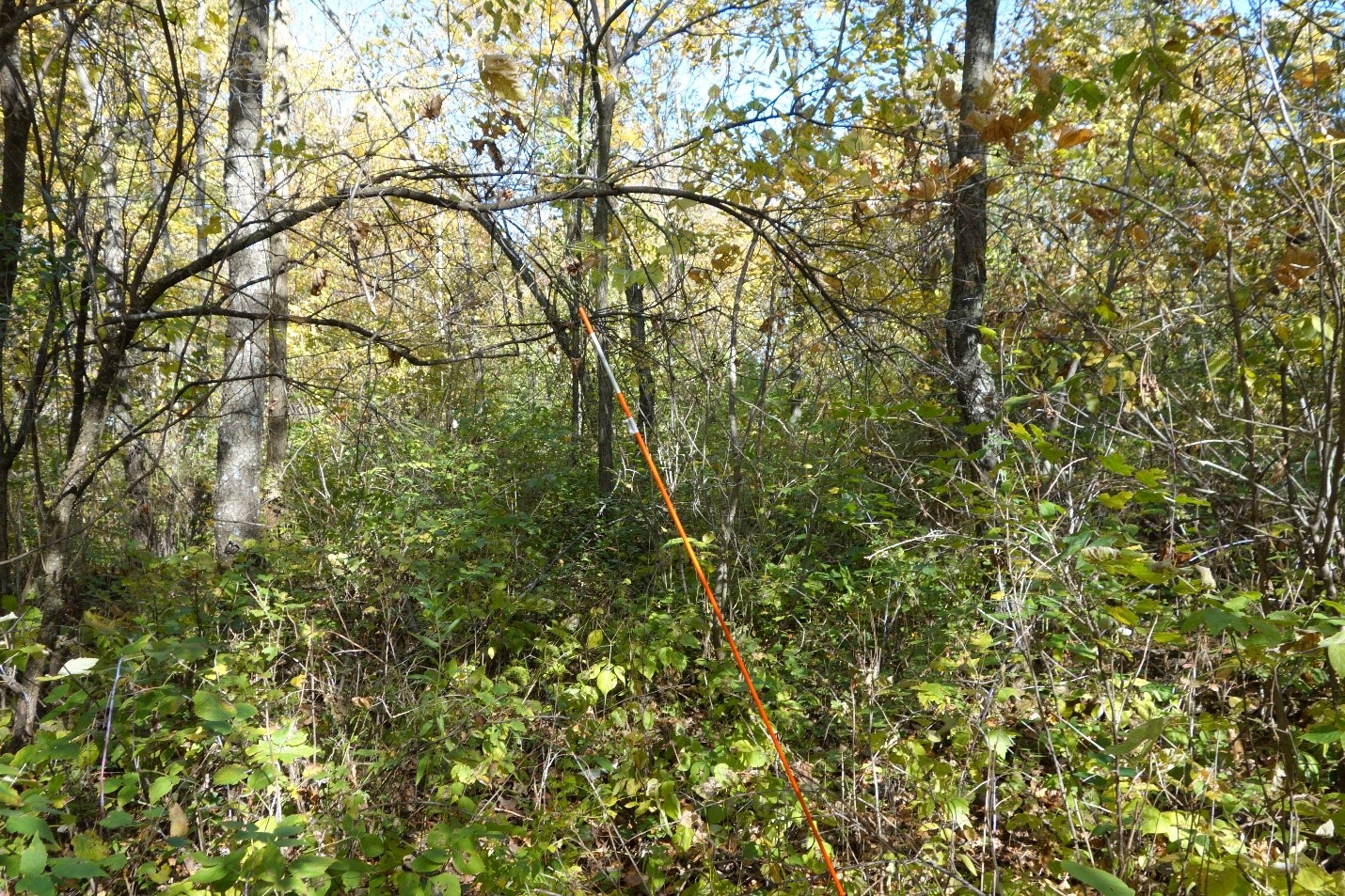
Figure 2: A 2020 photo of a portion of the stand treated in 1995 with a clearcut with reserves harvest. The stand was quite variable in overstory density and species composition as of 2020.
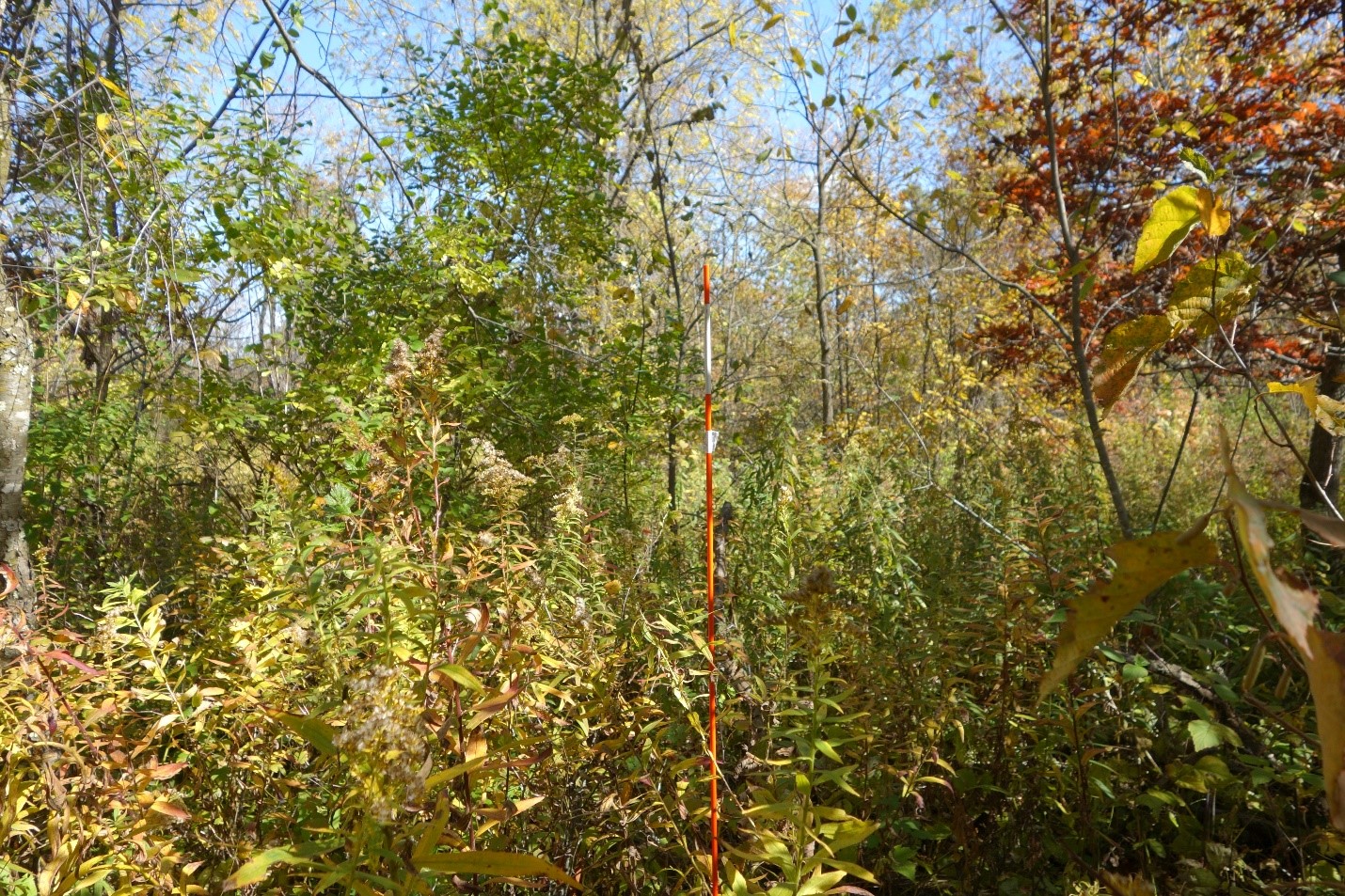
Figure 3: Fall 2020 picture of a portion of the study area treated in 1995 and 2010 with a 2-stage shelterwood harvest, and 2013 planting
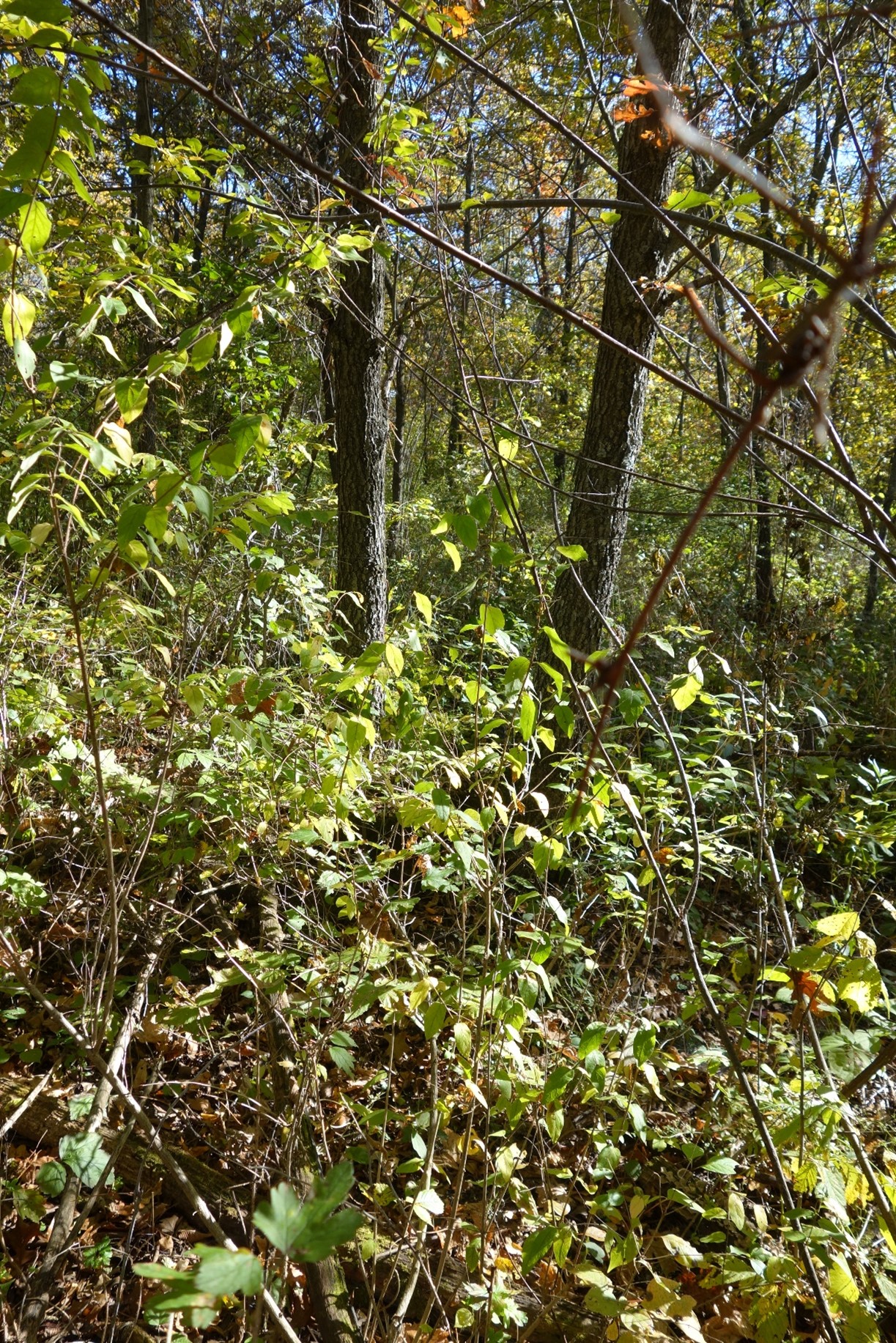
Figure 4: Red oaks from post-harvest stump sprout origin in the clearcut with reserves portion of the study area
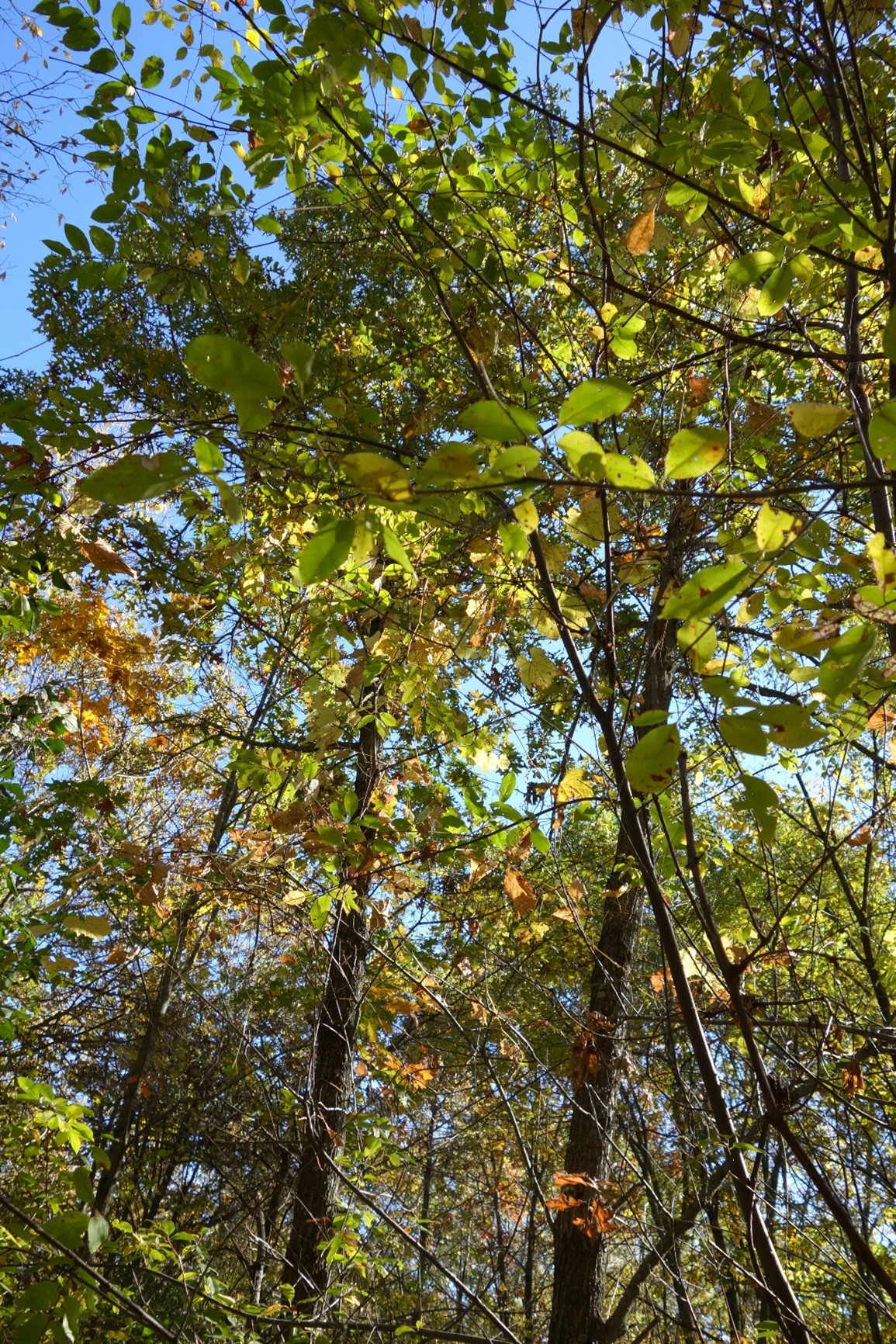
Figure 5: Some coppice-origin oak growing up among heavy competition on the shelterwood portion of the site
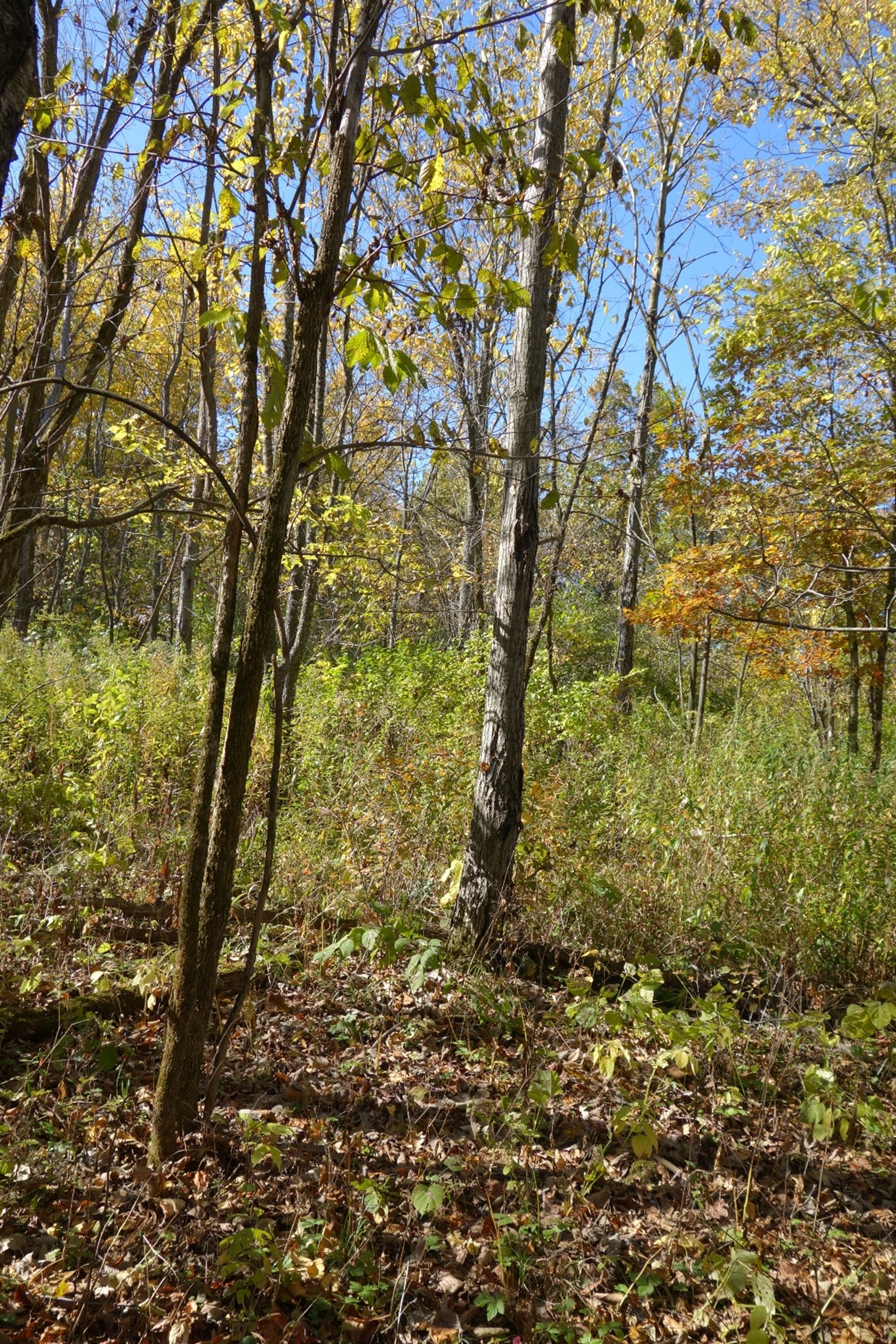
Figure 6: A portion of the stand with some butternut stems in the clearcut with reserves area in October 2020

Figure 7: A lone planted white oak seedling in 2020. This was the only surviving planted oak we found on a sample plot in the shelterwood portion of the site in 2020
Table 3: Stems/acre of regeneration 3” DBH and below by species, size class and plot frequency in 2020
Size Class | Regenerants: < 1’ tall | Seedlings: ≥1’ tall and < 1” DBH | Saplings: 1” to 3” DBH | |||
Species | Stems/ Acre | Freq | Stems/ Acre | Freq | Stems/ Acre | Freq |
Elm | 95 | 9.5% | 429 | 28.6% | 690 | 61.9% |
Basswood | 0 | 0% | 0 | 0% | 357 | 23.8% |
Black Cherry | 48 | 4.8% | 0 | 0% | 333 | 38.1% |
Boxelder | 0 | 0% | 48 | 4.8% | 238 | 28.6% |
Red Oak | 95 | 9.5% | 0 | 0% | 214 | 23.8% |
White Oak | 48 | 4.8% | 48 | 4.8% | 167 | 23.8% |
Black Walnut | 0 | 0% | 0 | 0% | 95 | 19% |
Hackberry | 0 | 0% | 190 | 19% | 71 | 9.5% |
Ash | 0 | 0% | 0 | 0% | 48 | 9.5% |
Ironwood | 0 | 0% | 48 | 4.8% | 24 | 4.8% |
Bitternut Hickory | 95 | 4.8% | 48 | 4.8% | 0 | 0% |
Sugar Maple | 143 | 9.5% | 0 | 0% | 0 | 0% |
The different harvest techniques (clearcut and shelterwood) and site preparation by different log skidding techniques (full-tree vs. non full-tree skidding) did not appear to have had a major impact on current oak regeneration levels and sizes
Since we couldn’t locate the M.S. thesis relating to this site, we can’t know what the immediate post-treatment impact of different log-skidding site preparation techniques on oak regeneration establishment was. However, there is currently little seedling-origin oak on almost the entire site, so the impact on current conditions was clearly modest. The different harvest techniques of clearcut with reserves and shelterwood also appear to have had only a modest impact on current oak regeneration levels.
Perhaps the only difference worthy of mention is that there is greater abundance and frequency of coppice-origin red oak in the clearcut with reserves area. See the in the 5-10” DBH size class red oak data in Supplemental table 1.
Understory Plants
Prickly ash was present at varying levels almost throughout the stand.
Invasive Species:
We found invasive buckthorn and honeysuckle on the site. Honeysuckle was visible on 90% of plots, with medium density. Buckthorn was visible on 66% of plots, with low to medium density.
Plans for Future Treatments
Monitor the stand through periodic inventory surveys.
Continued invasives monitoring and control work will be done as needed.
Costs and economic considerations
Costs
Table 4: Cost/acre of silvicultural activities by treatment unit
4 acre clearcut w/ reserves harvest |
| 6 acre shelterwood | ||
Activity | Cost/acre |
| Activity | Cost/acre |
Timber sale setup and administration | $ 75 (1995 dollars) |
| Timber sale setup and administration | $ 75 (1995 dollars) |
Post-sale killing of competing undesirable trees | $ 75 (1995 dollars) |
| Post-sale killing of competing undesirable trees | $ 75 (1995 dollars) |
|
|
| Underplanting oak and walnut seedlings | $197 (2009 dollars) |
|
|
| Timber sale setup and administration | $100 (2010 dollars) |
|
|
| Post-sale killing of competing undesirable trees | $125 (2012 dollars) |
Total | $ 150 |
| Total | $ 572 |
Revenue
Table 5: Revenue/acre of silvicultural activities by treatment unit
4 acre clearcut w/ reserves harvest |
| 6 acre shelterwood | ||
Item | Revenue/acre |
| Item | Revenue/acre |
Timber revenue | $ 676 (1995 dollars) |
| Timber revenue | $ 490 (1995 dollars) |
|
|
| Timber revenue (estimated) | $ 350 (2012 dollars) |
Total | $ 676 |
| Total | $ 840 |
Other notes
There is a component of butternut in part of the stand. Most of the stems are clearly infected with butternut canker, but several have very few visible cankers.
One possible climate change factor to monitor is the currently healthy black cherry component: Much of the black cherry on this site is off to a healthy, well-formed start after 23 years. One reason for the improved form and health may be that the current black cherry was established and grew in nearly full sunlight after the clearcut with reserves harvest. This is in contrast with the partial-shade establishment and growth conditions that were probably the case for the previous generation, requiring their struggle for sunlight through partial shade. Another possible reason for better black cherry health and form could be the wetter climate experienced over the past several decades.
MNDNR Silviculture Program Consultant Mike Reinikainen provided valuable review and editing help.
This case study was developed with support from the United States Department of Agriculture's National Institute for Food and Agriculture, Renewable Resources Extension Act. Project #2021-46401-35956, principal investigator Eli Sagor, University of Minnesota.
Summary
Both the clearcut with reserves and the shelterwood treatments have resulted in a diverse central hardwood stand with significant basswood, oak, walnut, butternut and black cherry components in 2020
Coppice origin oak and harvest reserve trees have provided an important oak component to the stand, especially in the clearcut with reserves treatment area
With rapid early growth, coppice origin oaks can be an important part of a regeneration strategy on some sites. While we would not suggest counting on coppicing as the only part of a successful oak regeneration strategy for most sites, it can play a useful role. This is especially true where many of the oaks to be harvested are 17” DBH or below, and therefore more likely to sprout. There is helpful guidance for estimating oak sprouting on page 25 of the US Forest Service publication “Prescribing Regeneration Treatments for Mixed-Oak Forests in the Mid-Atlantic Region”.
There is very little oak from seedling origin in the current stand
In spite of all of the effort to establish oak seedlings post-harvest in 1995/96, there is now very little seedling-origin oak.
It is likely that additional intermediate stand treatment (release) and possibly protection from animal browse would have been necessary for seedling oaks to reach “free-to-grow” stage
We can’t know for sure due to a lack of early regeneration data. However, since the focus of University of Minnesota research on this site was oak regeneration, it is likely that there was some oak seedling regeneration established after harvest. If that was indeed the case, almost all of it got outcompeted in the years since. Therefore, it is likely that additional post-harvest release treatments would have been necessary to better achieve the oak regeneration objective. It is also well documented that young oaks are tasty deer food, and therefore deer browse is commonly a factor keeping oak from successfully competing.
The stand has a good component of healthy, well-formed black cherry
A notable outcome of the treatments is that there is a good component of healthy, well-formed black cherry in the current stand. This is interesting because in the observations of co-author Keith Jacobson and others while in the field in the 1980s and 1990s, most black cherry tended to have crooked stems, thin crowns and major heartrot. Of note for forest managers, the NPC guidance for MHs 37 indicates that black cherry may need some intermediate release to reach heights much above 10 meters.
One reason for the improved form and health may be that the current black cherry was established and grew in nearly full sunlight after a clearcut with reserves harvest. This is in contrast with the partial-shade establishment and growth conditions that were probably the case for previous generations of black cherries. Another possible reason for better black cherry health and form could be the somewhat warmer and wetter climate experienced over the past several decades.
The different harvest techniques (clearcut and shelterwood) and site preparation by different log skidding techniques (full-tree vs. non full-tree skidding) did not appear to have had a major impact on current oak regeneration levels and sizes
Since we couldn’t locate the M.S. thesis relating to this site, we can’t know what the immediate post-treatment impact of different log-skidding site preparation techniques on oak regeneration establishment was. However, there is currently little seedling-origin oak on almost the entire site, so the impact on current conditions was clearly modest. The different harvest techniques of clearcut with reserves and shelterwood also appear to have had only a modest impact on current oak regeneration levels.
Perhaps the only difference worthy of mention is that there is greater abundance and frequency of coppice-origin red oak in the clearcut with reserves area. See the in the 5-10” DBH size class red oak data in Table 6.
Supplemental content
Supplemental table 1: Tree abundance and frequency on plots by size class and treatment area in 2020
| Clearcut with reserves area | Shelterwood area | ||||
Species and Size Class | Stem/ac | Freq. | BA | Stem/ac | Freq. | BA |
Sugar Maple Regenerants | 0 | 0.00% | 273 | 18.2% | ||
Sugar Maple Seedlings | 0 | 0.00% |
| 0 | 0.0% |
|
Black Walnut Regenerants | 0 | 0.0% | 0 | 0.0% | ||
Black Walnut Seedlings | 0 | 0.0% | 0 | 0.0% | ||
Black Walnut Saplings | 150 | 30.0% | 45 | 9.1% | ||
Black Walnut Small Trees | 10 | 10.0% | 9 | 9.1% | ||
Black Walnut 5-10" DBH | 30.0% | 6.0 | 18.2% | 1.8 | ||
Black Walnut 10-15" DBH | 10.0% | 1.0 | 18.2% | 1.8 | ||
Black Walnut 15-20" DBH | 0.0% | 0.0 | 0.0% | 0.0 | ||
Black Walnut 20" Plus DBH |
| 0.0% | 0.0 |
| 0.0% | 0.0 |
Bitternut Hickory Regenerants | 0 | 0.0% | 182 | 9.1% | ||
Bitternut Hickory Seedlings | 100 | 10.0% | 0 | 0.0% | ||
Bitternut Hickory Saplings | 0 | 0.0% | 0 | 0.0% | ||
Bitternut Hickory Small Trees | 0 | 0.0% | 0 | 0.0% | ||
Bitternut Hickory 5-10" DBH | 0.0% | 0.0 | 0.0% | 0.0 | ||
Bitternut Hickory 10-15" DBH | 0.0% | 0.0 | 0.0% | 0.0 | ||
Bitternut Hickory 15-20" DBH | 0.0% | 0.0 | 0.0% | 0.0 | ||
Bitternut Hickory 20" Plus DBH |
| 0.0% | 0.0 |
| 0.0% | 0.0 |
Butternut Regenerants | 0 | 0.0% | 0 | 0.0% | ||
Butternut Seedlings | 0 | 0.0% | 0 | 0.0% | ||
Butternut Saplings | 0 | 0.0% | 0 | 0.0% | ||
Butternut Small Trees | 0 | 0.0% | 0 | 0.0% | ||
Butternut 5-10" DBH | 40.0% | 8.0 | 36.4% | 4.0 | ||
Butternut 10-15" DBH | 0.0% | 0.0 | 0.0% | 0.0 | ||
Butternut 15-20" DBH | 0.0% | 0.0 | 0.0% | 0.0 | ||
Butternut 20" Plus DBH |
| 0.0% | 0.0 |
| 0.0% | 0.0 |
Red Oak Regenerants | 100 | 10.0% | 91 | 9.1% | ||
Red Oak Seedlings | 0 | 0.0% | 0 | 0.0% | ||
Red Oak Saplings | 150 | 20.0% | 273 | 27.3% | ||
Red Oak Small Trees | 10 | 10.0% | 9 | 9.1% | ||
Red Oak 5-10" DBH | 40.0% | 10.0 | 9.1% | 0.9 | ||
Red Oak 10-15" DBH | 0.0% | 0.0 | 0.0% | 0.0 | ||
Red Oak 15-20" DBH | 10.0% | 2.0 | 18.2% | 1.8 | ||
Red Oak 20" Plus DBH |
| 0.0% | 0 |
| 9.1% | 0.9 |
White Oak Regenerants | 0 | 0.0% | 91 | 9.1% | ||
White Oak Seedlings | 0 | 0.0% | 91 | 9.1% | ||
White Oak Saplings | 250 | 40.0% | 91 | 9.1% | ||
White Oak Small Trees | 30 | 20.0% | 18 | 9.1% | ||
White Oak 5-10" DBH | 10.0% | 1.0 | 45.5% | 6.4 | ||
White Oak 10-15" DBH | 10.0% | 1.0 | 18.2% | 1.8 | ||
White Oak 15-20" DBH | 0.0% | 0.0 | 45.5% | 4.5 | ||
White Oak 20+" DBH |
| 0.0% | 0.0 |
| 0.0% | 0.0 |
Ash Regenerants | 0 | 0.0% | 0 | 0.0% | ||
Ash Seedlings | 0 | 0.0% | 0 | 0.0% | ||
Ash Saplings | 0 | 0.0% | 91 | 18.2% | ||
Ash Small Trees | 0 | 0.0% | 0 | 0.0% | ||
Ash 5-10" DBH | 0.0% | 0.0 | 0.0% | 0.0 | ||
Ash 10-15" DBH | 0.0% | 0.0 | 0.0% | 0.0 | ||
Ash 15-20" DBH | 0.0% | 0.0 | 0.0% | 0.0 | ||
Ash 20" Plus DBH |
| 0.0% | 0.0 |
| 0.0% | 0.0 |
Basswood Regenerants | 0 | 0.0% | 0 | 0.0% | ||
Basswood Seedlings | 0 | 0.0% | 0 | 0.0% | ||
Basswood Saplings | 250 | 20.0% | 455 | 27.3% | ||
Basswood Small Trees | 30 | 10.0% | 18 | 18.2% | ||
Basswood 5-10" DBH | 40.0% | 8.0 | 36.4% | 8.2 | ||
Basswood 10-15" DBH | 0.0% | 0.0 | 0.0% | 0.0 | ||
Basswood 15-20" DBH | 0.0% | 0.0 | 0.0% | 0.0 | ||
Basswood 20" Plus DBH |
| 0.0% | 0.0 |
| 0.0% | 0.0 |
Elm Regenerants | 200 | 20.0% | 0 | 0.0% | ||
Elm Seedlings | 500 | 30.0% | 364 | 18.2% | ||
Elm Saplings | 550 | 60.0% | 818 | 54.5% | ||
Elm Small Trees | 110 | 70.0% | 36 | 27.3% | ||
Elm 5-10" DBH | 40.0% | 7.0 | 0.0% | 0.0 | ||
Elm 10-15" DBH | 0.0% | 0.0 | 0.0% | 0.0 | ||
Elm 15-20" DBH | 0.0% | 0.0 | 0.0% | 0.0 | ||
Elm 20" Plus DBH |
| 0.0% | 0.0 |
| 0.0% | 0.0 |
Hackberry Regenerants | 0 | 0.0% | 0 | 0.0% | ||
Hackberry Seedlings | 200 | 20.0% | 182 | 18.2% | ||
Hackberry Saplings | 100 | 10.0% | 45 | 9.1% | ||
Hackberry Small Trees | 0 | 0.0% | 0 | 0.0% | ||
Hackberry 5-10" DBH | 10.0% | 2.0 | 0.0% | 0.0 | ||
Hackberry 10-15" DBH | 0.0% | 0.0 | 0.0% | 0.0 | ||
Hackberry 15-20" DBH | 0.0% | 0.0 | 0.0% | 0.0 | ||
Hackberry 20" Plus DBH |
| 0.0% | 0.0 |
| 0.0% | 0.0 |
Black Cherry Regenerants | 100 | 10.0% | 0 | 0.0% | ||
Black Cherry Seedlings | 0 | 0.0% | 0 | 0.0% | ||
Black Cherry Saplings | 150 | 10.0% | 500 | 63.6% | ||
Black Cherry Small Trees | 30 | 10.0% | 27 | 18.2% | ||
Black Cherry 5-10" DBH | 40.0% | 9.0 | 27.3% | 4.5 | ||
Black Cherry 10-15"DBH |
| 0.0% | 0.0 |
| 0.0% | 0.0 |
Ironwood Regenerants | 0.0% | 0.0% | ||||
Ironwood Seedlings | 0.0% | 0.0% | ||||
Ironwood Saplings | 0.0% | 9.1% | ||||
Ironwood Small Trees |
| 0.0% |
|
| 9.1% |
|
Bur Oak Regenerants | 0 | 0.0% | 0 | 0.0% | ||
Bur Oak Seedlings | 0 | 0.0% | 0 | 0.0% | ||
Bur Oak Saplings | 0 | 0.0% | 0 | 0.0% | ||
Bur Oak Small Trees | 0 | 0.0% | 0 | 0.0% | ||
Bur Oak 5-10" DBH | 0.0% | 0.0 | 0.0% | 0.0 | ||
Bur Oak 10-15" DBH | 0.0% | 0.0 | 0.0% | 0.0 | ||
Bur Oak 15-20"DBH |
| 0.0% | 0.0 |
| 0.0% | 0.0 |
Boxelder Regenerants | 0 | 0.0% | 0 | 0.0% | ||
Boxelder Seedlings | 100 | 10.0% | 0 | 0.0% | ||
Boxelder Saplings | 250 | 30.0% | 227 | 27.3% | ||
Boxelder Small Trees | 0 | 0.0% | 9 | 9.1% | ||
Boxelder 5-10" DBH | 0.0% | 0.0 | 0.0% | 0.0 | ||
Boxelder 10-15" DBH |
| 0.0% | 0.0 |
| 0.0% | 0.0 |
Aspen 5-10" DBH | 10.0% | 1.0 | 0.0% | 0.0 | ||
Aspen 10-15" DBH |
| 0.0% | 0.0 |
| 0.0% | 0.0 |
Total BA |
|
| 56.0 |
|
| 36.7 |
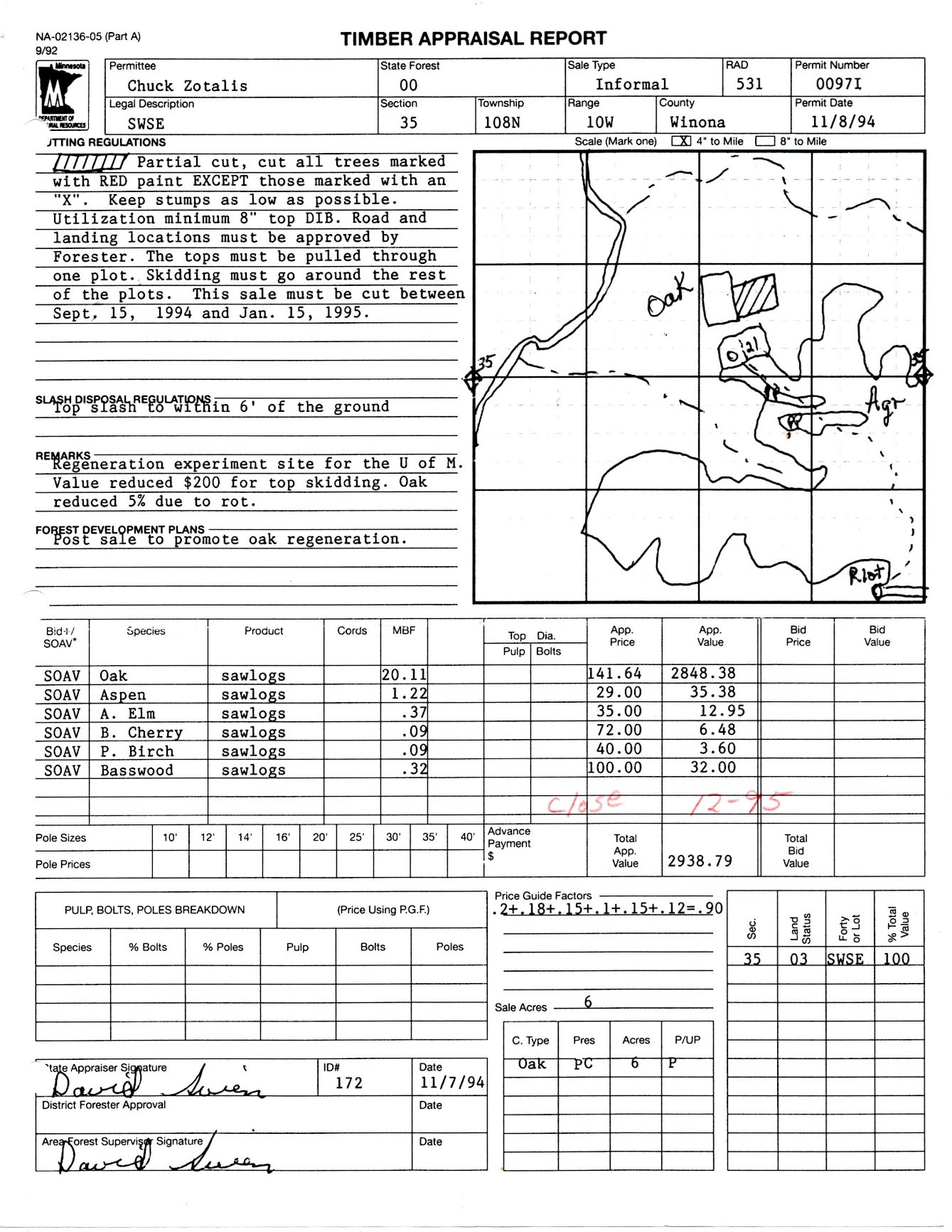
Supplemental figure 1: 1994 Timber Sale Permit – 6 acre partial harvest shelterwood. This sale was the first stage of the 2-stage shelterwood harvest.

Supplemental figure 2: 1994 Timber Sale Permit – 4 acre clearcut with reserves
